Wächtersbacher Steingutfabrik
 producer/manufacturer
producer/manufacturer
Wächtersbacher Steingutfabrik / Wächterbacher Keramik GmbH
Schlierbach (now Brachttal-Schlierbach), near Wächtersbach, Hessen Nassau (now Hesse).
Hersteller / Manufacturer
White clay was found in the Ysenburg-Waechtersbachschen forest in 1829, which was very suitable for the production of earthenware. On June 8, 1832, the factory was founded by
Count Adolf zu Ysenburg und Büdingen, and on October 1, 1832 was production was started. In 1840, the copper transfer process was introduced as another decoration. At the end of the 19th century Wächtersbach reached its first peak under the direction of Max Roesler. The Wächtersbacher Art Nouveau is inseparably connected with the name of the art ceramist Christian Neureuther who founded an artistic studio in 1901. In 1903 the independent "Kunstkeramische Department" was incorporated into the earthenware factory. Waechtersbach also produced at this time also for the Darmstadt artist colony. The Art Department was closed in 1923. In 1931, the renowned designer Ursula Fesca, was hired to oversee the design with influences of the Bauhaus style. Waechtersbach suffered due to the global economic crisis and losses during World War II. In late 1944 production was discontinued, but the factory was spared from major damage, so production was resumed in February 1946. Since the 1960s, the company has exported their products to America. The sales office in Kansas City, United States was founded in 1976. The factory was taken over by the Könitz group at the 18th Sept. 2006, The factory was closed in 2011. The Waechterbach brand is still sold by Könitz Porzellan GmbH. Turpin Rosenthal currently runs the company, but whilst some production is in the Könitz Porzellan factory, the remainder is in China and Thailand.
Some steins designed by:
Annie Offterdinger
Reference:
Wächtersbach Wikipedia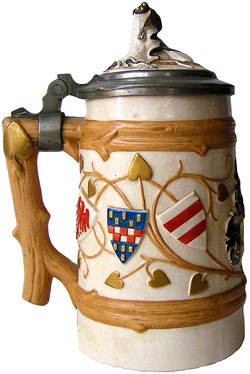
Side view of the centre stein giving representations of Coats of Arms (Wappen)
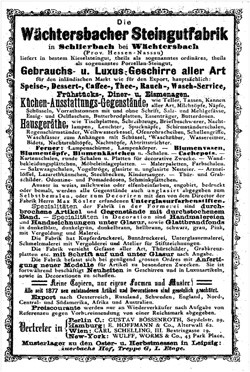
Advertisement featured in the Ceramical Address Book of 1883. (.)
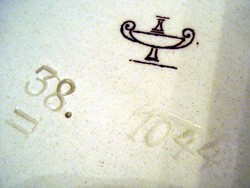
Basemarks on a Wächtersbach charger.

Impressed mark
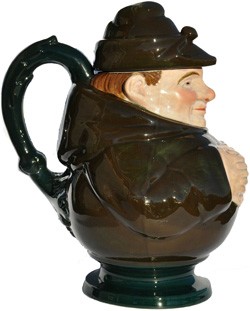
"Monk" character stein, R/H side. ×
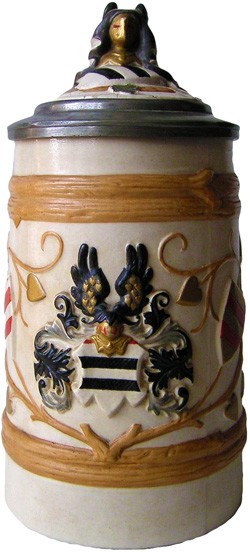
Probably a representation of a family coat of arms (Familiewappen).
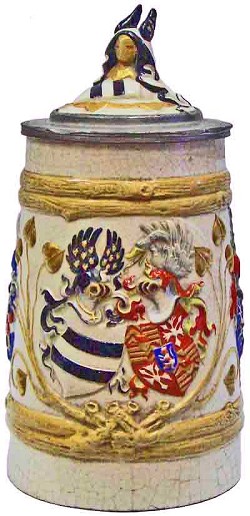
Probably a representation of a family coat of arms (Familiewappen). This together with the above stein are probably two of a series.
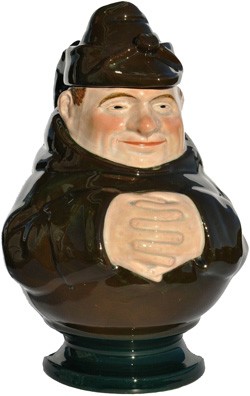
"Monk" character stein
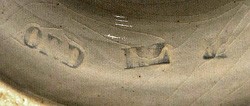
Basemarks on the foot rim of the Monk stein.
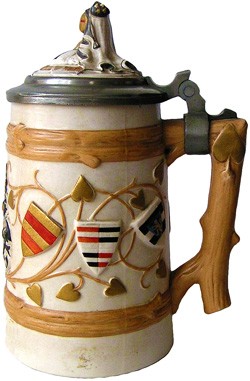
Side view of the centre stein giving representations of Coats of Arms (Wappen)
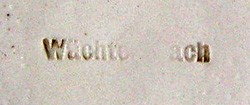
This impressed base mark is on the featured stein on the top row.
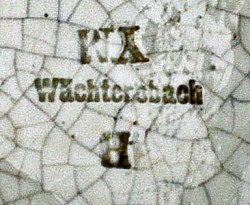
Impressed mark on featured stein immediately left.
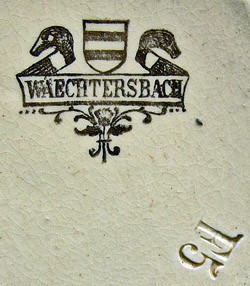
Inkstamp on base of a modern clamp-top storage jar.
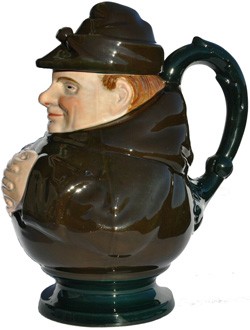
"Monk" character stein, L/H side.














